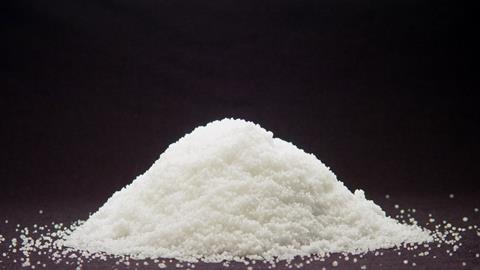Researchers in Eindhoven are using electrocatalysis on a copper and zinc oxide catalyst to produce the fertiliser urea from two waste products.
Urea is a widely used fertiliser, usually produced from ammonia and CO2 using thermal catalysis. However, due to the high temperatures required, this process also has high CO2 emissions. An alternative process is electrocatalysis. A team of researchers from TU Eindhoven is now using electrocatalysis to combine the waste products nitrate and CO2 to produce urea, a complex molecule that is more valuable to industry than ammonia. They have published their findings in Communications Chemistry.
The researchers studied a CuOxZnOy bimetallic system with different CuO and ZnO ratios. A 50-50 ratio of CuO and ZnO was found to give the highest activity and selectivity for urea production. According to author Dimitra Anastasiadou, the analysis of the urea produced was a major challenge. ’It was an aqueous medium with carbon and nitrogen compounds, which I studied with UV-vis. To analyse the amount of urea, I first had to determine the amount of ammonia in the system, then use an enzyme to convert the urea back to ammonia and then do the same determination, so that I could calculate the amount of product from the difference. It would have been more efficient to use a more powerful NMR, but I had to do it this way.’
According to Anastasiadou, their process is not intended to replace the Haber-Bosch process for ammonia production. ‘It is more suitable for specific sites where there is agriculture close to industry or wastewater with high nitrate concentrations. The challenge then is to filter the wastewater for other metals or nutrients, as these can poison the catalyst. You also need an electrochemical cell for industrial applications to improve efficiency.’ Before they can look at such practical applications, the researchers need to carry out stability tests and choose a separation process for the final mixture of urea and ammonia.
For now, the researchers are concentrating on understanding the catalyst. ‘We are focusing on why and how the copper and zinc oxide catalyse the reaction. Does the combination work better because we are combining two metals or is there a synergistic effect? What is the active phase and what are the intermediates? We are now working on a follow-up publication that will go deeper into why this catalyst works and what the reaction pathway is.’
Anastasiadou et al. (2023) Communications Chemistry https://doi.org/10.1038/s42004-023-01001-5













Nog geen opmerkingen